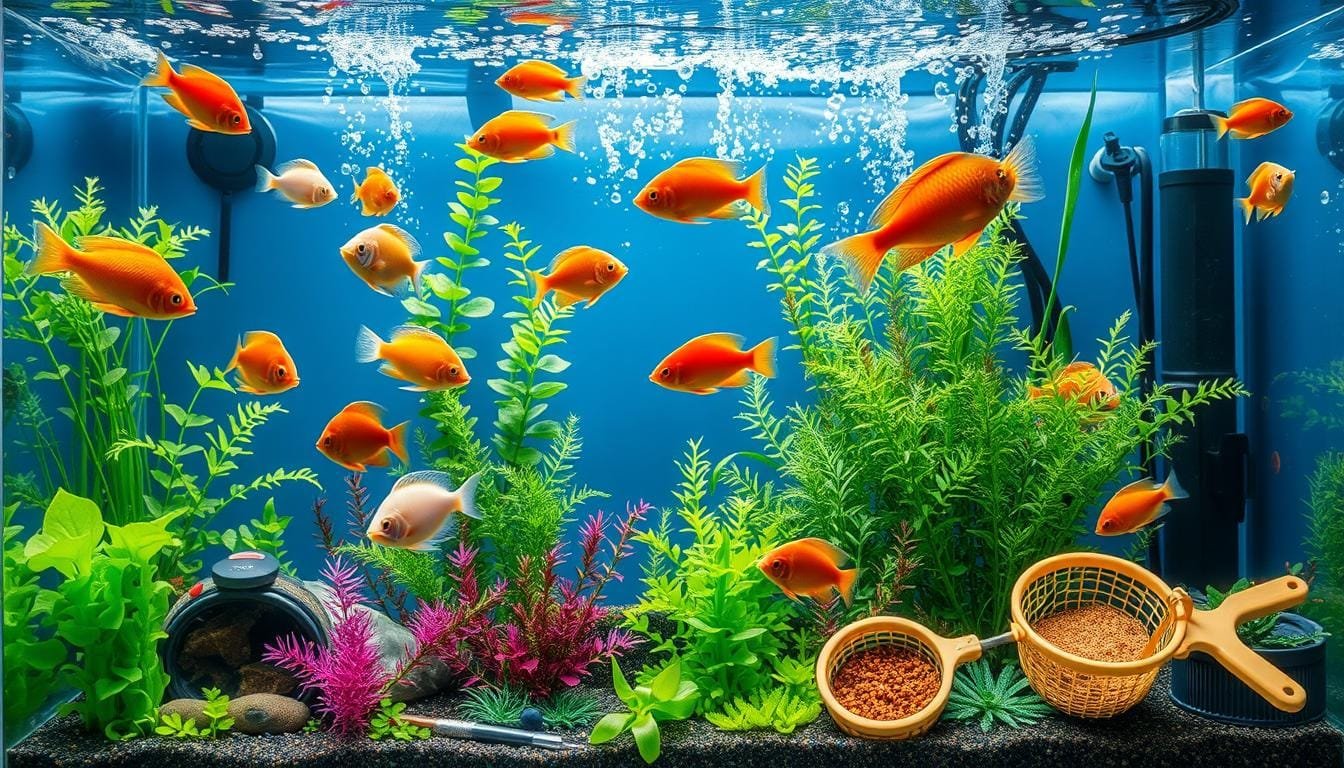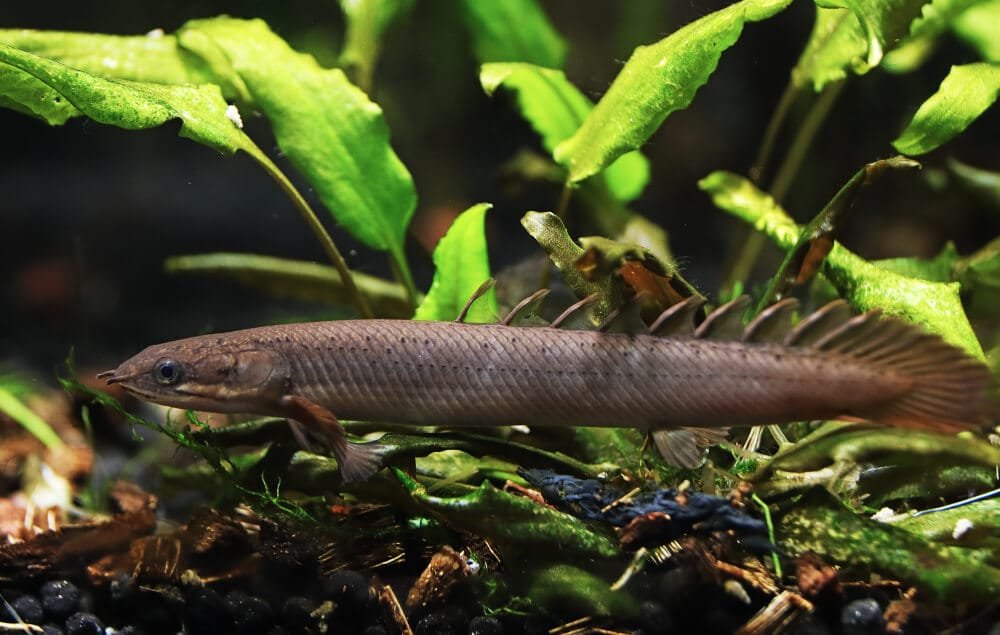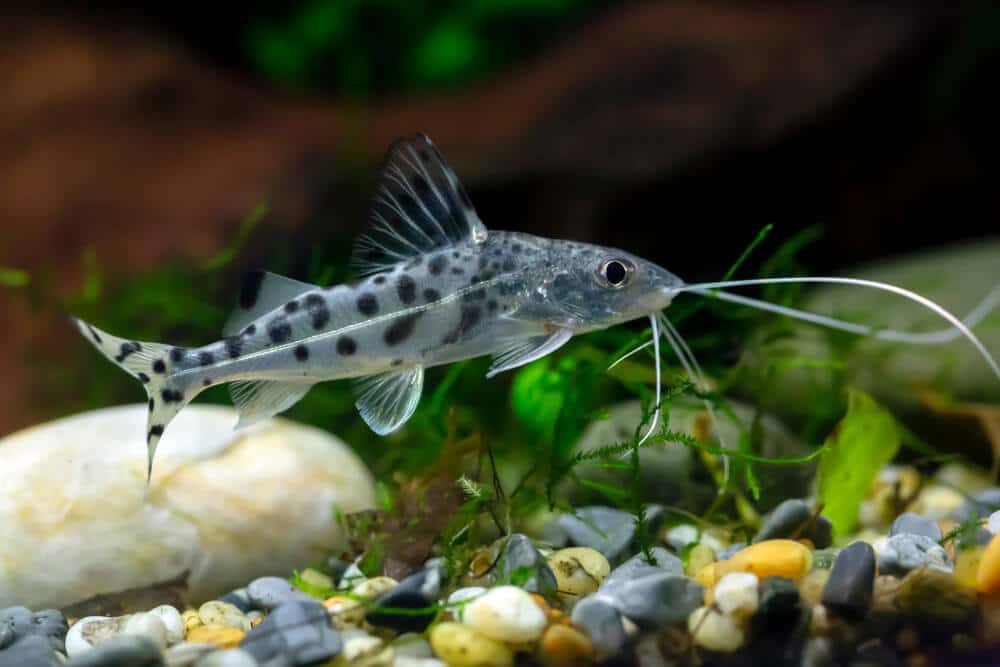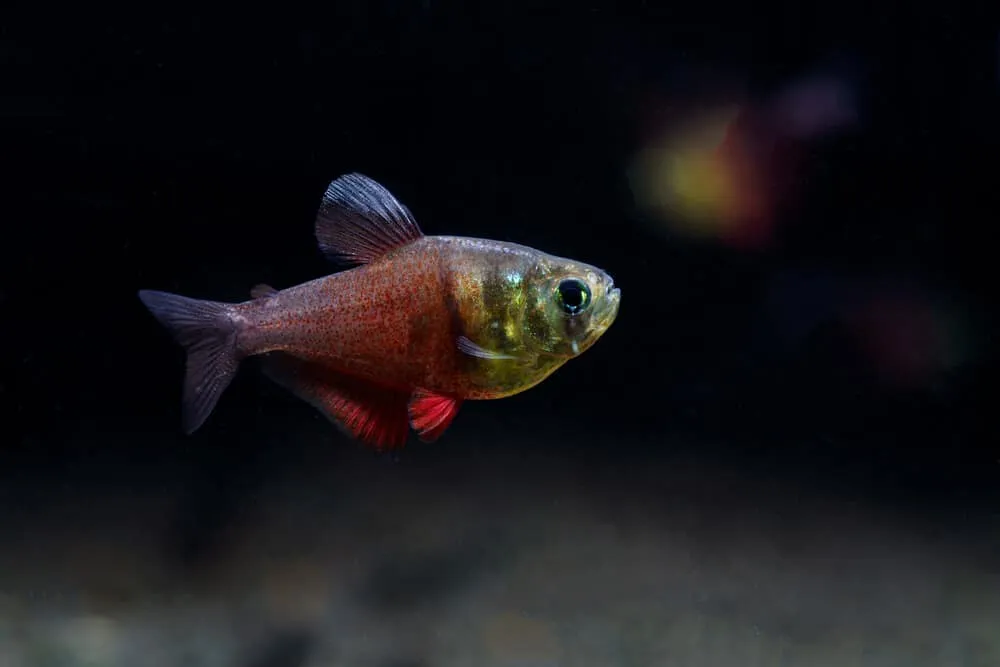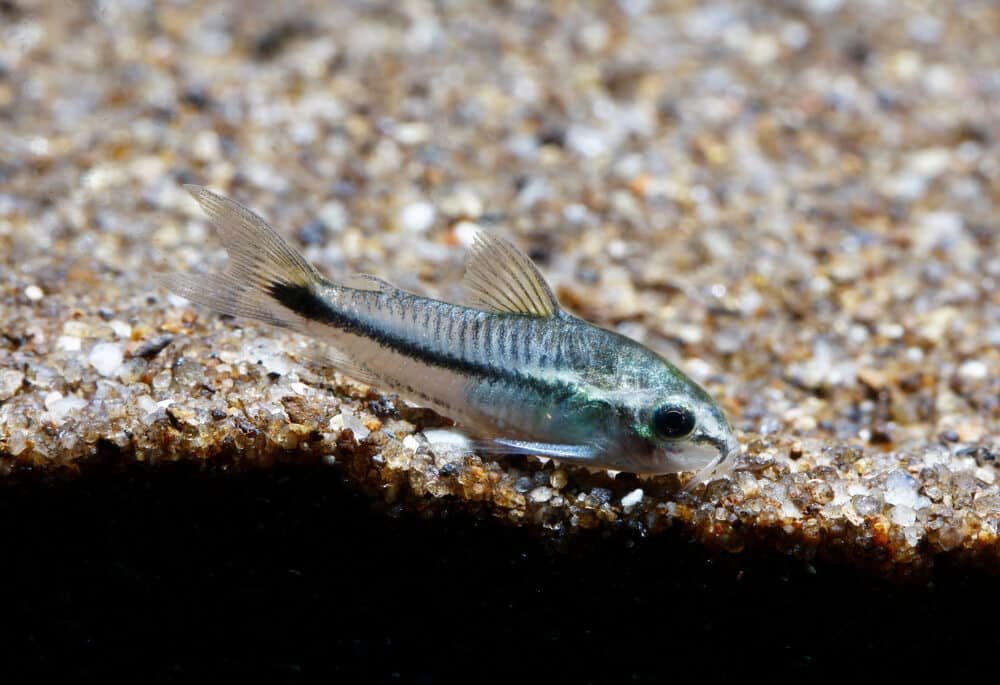Research shows that 70% of new fishkeepers feel overwhelmed by aquarium care. This can lead to costly mistakes in their hobby. Fishkeeping can be a maze for beginners, with many pitfalls.
Setting up a fish tank is more than just passion. About 50% of new owners don’t think about their fish’s needs. This can harm the fish. Knowing these mistakes can make your tank a thriving place.
Overfeeding fish is a big mistake, causing about 40% of fish deaths. Overcrowding and wrong water conditions can also ruin your tank. These errors can turn your dream into a nightmare.
This guide will help you avoid common mistakes. We’ll cover tank cycling and choosing the right fish. You’ll learn how to make your aquarium a success and a vibrant home for your fish.
Understanding the Critical Importance of Tank Cycling
Aquarium cycling is key to your fish tank’s health. New owners often skip this step, harming their fish.
The nitrogen cycle turns harmful waste into safer forms with the help of beneficial bacteria. Without it, fish face deadly ammonia and nitrite levels.
The Nitrogen Cycle Explained
The nitrogen cycle has three main steps:
- Ammonia production from fish waste
- Conversion of ammonia to nitrites
- Conversion of nitrites to less toxic nitrates
Signs of an Uncycled Tank
Spotting an uncycled tank is vital for fish safety. Look out for these signs:
- High ammonia levels (above 0.2 ppm)
- Sudden fish stress or death
- Cloudy water
- Persistent algae growth
“Patience is the key to successful aquarium cycling” – Experienced Aquarists
Methods for Proper Cycling
To cycle a tank, you need to create a home for beneficial bacteria. There are two main ways: fishless cycling and fish-in cycling. Fishless cycling is best for beginners.
| Cycling Method | Duration | Recommended for Beginners |
|---|---|---|
| Fishless Cycling | 4-6 weeks | Yes |
| Fish-in Cycling | 6-8 weeks | No |
To speed up cycling, you can use filter media from established tanks or special bacterial products. Always do regular water changes and check ammonia, nitrites, and nitrates closely.
Water Quality Management and Testing Essentials
Keeping water quality right is key for a happy aquarium. Testing water properly stops fish stress and keeps your pets healthy.
Knowing about water parameters is the first step in fishkeeping. Here are important things to watch:
- pH levels: Very important for fish health
- Chlorine in tap water
- Ammonia and nitrite levels
- Water hardness
*Prevention is always better than cure when it comes to aquarium water management.*
Testing water often catches problems early. Use good test kits to check:
- pH range (5.5 to 7.5 for freshwater fish)
- Ammonia levels
- Nitrite and nitrate concentrations
Tap water conditioner is key to remove bad stuff like chlorine. Sticking to a maintenance plan stops sudden changes that stress fish.
| Water Parameter | Ideal Range | Frequency of Testing |
|---|---|---|
| pH Levels | 6.5 – 7.5 | Weekly |
| Ammonia | 0 ppm | Twice weekly |
| Nitrites | 0 ppm | Twice weekly |
Spending time on water quality makes a safe and healthy home for your fish.
Beginner Mistakes in Fishkeeping: Essential Tips for Success
Starting with aquarium keeping can be tough for beginners. Many new fishkeepers face problems that harm their fish and tank. Knowing these common mistakes is key to a healthy aquarium.
Success in aquarium keeping needs careful planning and knowledge. About 70% of new owners struggle with basic tank care. Experienced aquarists say to do thorough to avoid big mistakes.
Common Water Parameter Issues
Good water quality is vital for a healthy aquarium. Sadly, over 75% of fish sicknesses come from bad water. Temperature changes can be very dangerous, raising fish death rates by 30%.
- Check pH levels often
- Watch ammonia and nitrate levels
- Use good water testing kits
Equipment Selection Mistakes
Picking the right equipment is key for a stable tank. Cheap filters or wrong heaters can cause big problems with cleaning and territory.
| Equipment | Common Mistake | Recommended Solution |
|---|---|---|
| Filters | Not enough filtration | Get a filter that fits your tank size |
| Heaters | Unstable temperature | Use reliable, accurate heaters |
| Lighting | Wrong spectrum | Choose lighting that matches your fish |
Stocking Decisions Gone Wrong
Overcrowding is a big problem for new fishkeepers. About 60% of beginners pick the wrong tank size, causing stress and aggression. It’s important to choose fish that get along.
The golden rule: Add no more than 1 inch of fish per gallon of water to prevent overcrowding.
Learning about fish behavior, their territory needs, and what they need can make your aquarium a success. It can go from a disaster to a thriving underwater world.
Proper Tank Size Selection and Setup
Choosing the right tank size is key for successful fishkeeping. Experienced aquarists recommend starting with a larger aquarium. This provides more stability for water parameters and fish health.
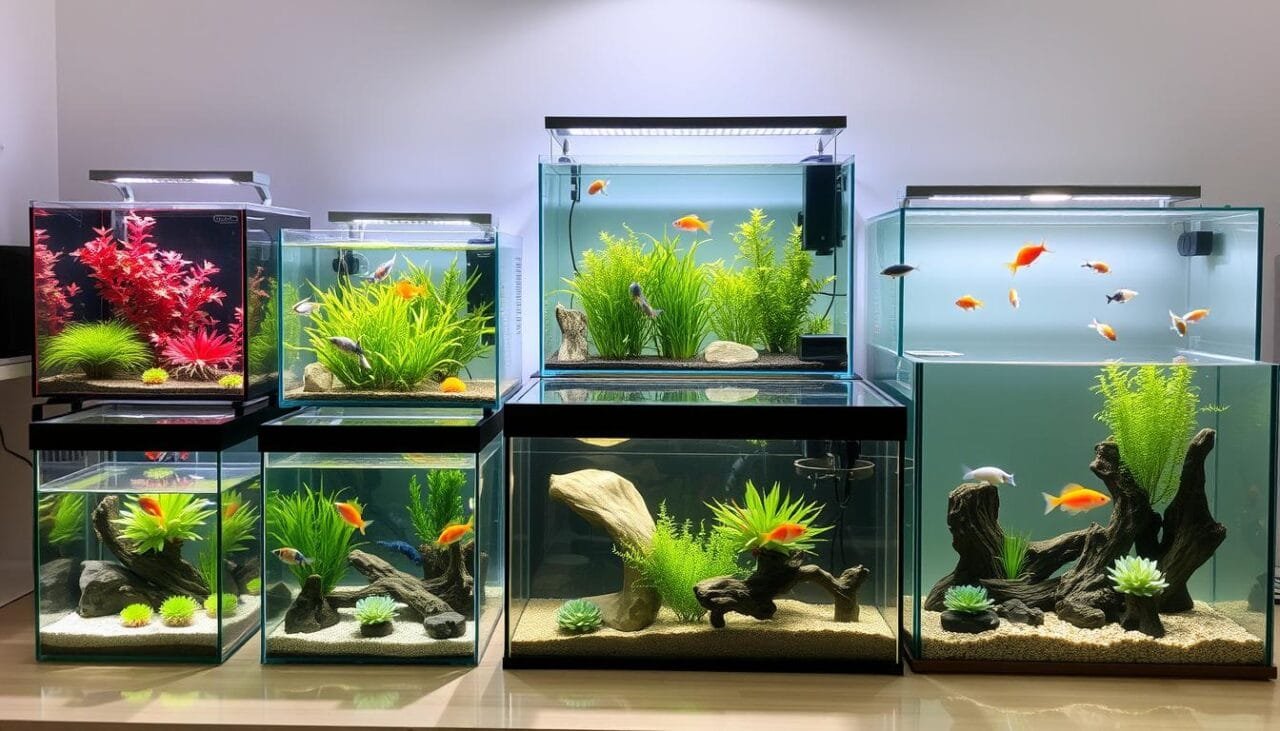
- Bioload: The number and type of fish you plan to keep
- Available space in your home
- Budget for initial setup and maintenance
*Larger tanks are actually easier to maintain than smaller ones due to greater water volume and stability.*
Tank placement is critical. Avoid direct sunlight, which can cause rapid algae growth and temperature fluctuations. Make sure your tank stand can support the weight – a freshwater tank can weigh more than 10 pounds per gallon when filled.
| Tank Size | Recommended Fish Capacity | Difficulty Level |
|---|---|---|
| 10-20 Gallons | Beginner fish, limited options | Challenging |
| 30-55 Gallons | Wider variety of fish | Moderate |
| 75+ Gallons | Multiple species, complex ecosystems | Advanced |
Consider setting up a quarantine tank to prevent disease spread. This separate tank allows you to monitor new fish before introducing them to your main aquarium. The average cost to set up a new fish tank starts from $200, so plan your budget carefully.
Fish Compatibility and Community Planning
Creating a harmonious aquarium ecosystem requires careful planning and understanding of fish interactions. Successful tank mates depend on multiple factors that go beyond simple species selection.
Researching fish compatibility is key before introducing new species to your aquarium. Different fish have unique needs that can affect their ability to live together peacefully.
Understanding Territorial Behavior
Territorial behavior is vital in community tank dynamics. Some fish are naturally more aggressive. They need specific strategies to avoid conflicts:
- Provide multiple hiding spots to reduce territorial tensions
- Carefully monitor interactions between different species
- Understand each species’ specific space requirements
Species-Specific Requirements
Each fish species has unique needs for water parameters, current strength, and environmental conditions. Consider these factors when choosing tank mates:
| Species | Water Temp | Compatibility | Recommended Tank Setup |
|---|---|---|---|
| Regal Tang | 74-80°F | Moderate | Large tank with open swimming areas |
| Pajama Cardinal Fish | 74-80°F | High | Reef tanks with soft substrate |
Creating Peaceful Communities
Design your aquarium environment strategically to minimize conflicts. Avoid decorations with sharp edges that could injure fish. Manage water flow and current strength to meet different species’ preferences.
The key to a thriving aquarium is understanding each fish’s unique environmental needs and social behaviors.
When selecting tank mates, consider factors like:
- Size compatibility
- Temperament
- Water parameter requirements
- Dietary needs
By investing time in research and thoughtful planning, you can create a vibrant, peaceful aquarium ecosystem. This ecosystem supports the health and happiness of all its inhabitants.
Feeding Practices and Common Mistakes
Learning how to feed fish is key to a healthy aquarium. Proper nutrition is more than just throwing food in the tank. Overfeeding is a big mistake that can harm the water quality.
Fish need a diet that fits their specific needs. Each species has its own eating schedule and food types. About 70% of fishkeepers make mistakes because they don’t understand their fish’s natural eating habits.
- Avoid feeding more than fish can consume in 2-3 minutes
- Remove expired or uneaten food promptly
- Vary diet with multiple food types
- Monitor fish behavior during feeding
It’s important to know how feeding affects water chemistry. Too much food breaks down and creates harmful ammonia, nitrites, and nitrates. These can destroy your tank’s ecosystem if not controlled.
“Feed less, test more” – A golden rule in fishkeeping
Regular water changes help manage waste from food. Experts say to change 10-15% of tank water weekly. This helps remove toxins without stressing your fish.
By following these basic feeding practices, you can create a healthy aquarium. This will support your fish’s long-term health.
Essential Equipment and Maintenance Routines
Keeping a healthy aquarium needs careful attention to equipment and regular upkeep. It’s more than just adding water and fish. Experienced aquarists know the importance of consistent care for a thriving underwater world.
Filter Maintenance and Performance
Filter capacity is key to keeping water quality good. Aquarium owners should stick to a regular filter maintenance plan. This ensures the filter works well. Important steps include:
- Regular carbon replacement every 4-6 weeks
- Cleaning mechanical filter parts monthly
- Checking biological filter media for efficiency
Lighting Requirements for Aquarium Environments
Right lighting is vital, more so for planted tanks. Knowing about light intensity and duration is key for plant and fish health. Here are some lighting tips:
| Tank Type | Light Intensity | Daily Duration |
|---|---|---|
| Low-Light Plants | Low | 6-8 hours |
| Medium-Light Plants | Medium | 8-10 hours |
| High-Light Plants | High | 10-12 hours |
Substrate and Fertilizer Management
The type of substrate affects plant growth and tank health. Using the right fertilizers helps plants grow strong and supports a balanced ecosystem. Keep an eye on nutrient levels to avoid shortages.
Remember, consistent maintenance is the key to a beautiful and healthy aquarium.
Disease Prevention and Health Monitoring
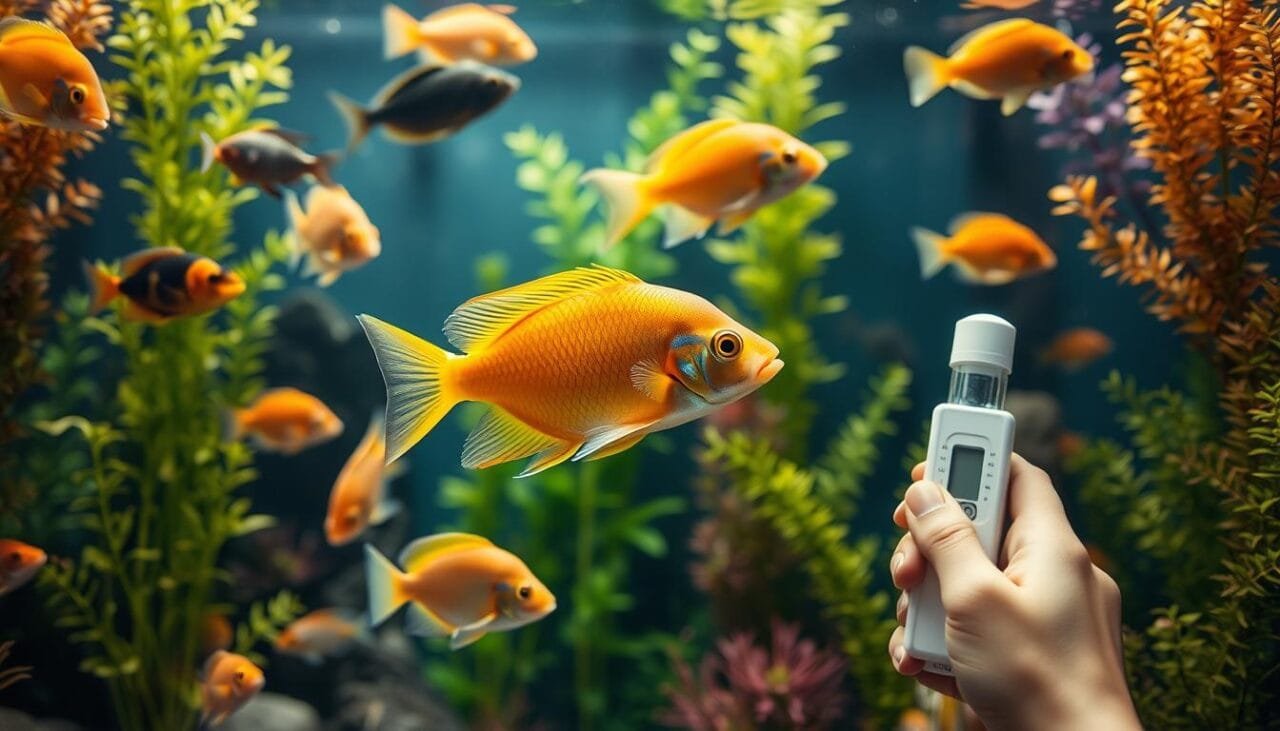
Keeping fish healthy means watching them closely and taking action early. Aquarium health management begins with knowing the signs of stress in fish.
Fish stress shows in several ways:
- Gasping at water surface
- Lethargy and reduced movement
- Loss of appetite
- Unusual swimming patterns
- Sudden changes in coloration
Stopping diseases starts with good water quality. Ammonia poisoning and nitrite poisoning can be deadly if not caught. Testing the water often is key to a healthy tank.
| Disease Prevention Step | Recommended Action |
|---|---|
| Water Testing | Check parameters weekly |
| Quarantine New Fish | Isolate for 2 weeks before introducing to main tank |
| Water Changes | Replace 10-20% every 2-3 weeks |
“Prevention is always better than cure in aquarium management.”
By following these steps, fish lovers can lower disease risks. This helps keep their fish lively and healthy.
Creating the Right Environmental Conditions
To make the perfect aquarium, you need to focus on many water parameters. Keeping fish healthy means knowing how to balance water chemistry and design the habitat.
Each fish type needs its own special environment. The hardness and alkalinity of the water are key to a healthy tank. Bigger tanks (20 gallons or more) are easier to keep stable.
- Maintain ideal water temperature around 78º F
- Monitor water clarity to prevent cloudy water
- Control possible bacterial bloom
- Manage green water and brown algae growth
The depth of the substrate is also important. A gravel vacuum helps keep the substrate clean. This stops harmful organic matter from building up.
“A stable environment mimics natural habitats and promotes fish health”
| Water Parameter | Recommended Range |
|---|---|
| pH Level (Freshwater) | 5.5 – 7.5 |
| pH Level (Saltwater) | 8.0 and above |
| Lighting Duration | 8-12 hours (ideal 10 hours) |
Regular monitoring and gentle adjustments are key to maintaining a thriving aquarium ecosystem. By understanding and applying these environmental rules, aquarists can create a lively, healthy home for their fish.
Conclusion
Fishkeeping is a rewarding hobby that needs patience and dedication. You now know how to keep your tank healthy. Successful aquarium management is about learning and caring consistently.
Water chemistry is vital for a healthy tank. Using a dechlorinator and watching pH levels helps prevent stress. Buffer capacity is essential for a stable home for your fish.
Don’t worry about tank maintenance being hard. Start with a 20-30 gallon tank and do weekly water changes. Learn about your fish’s needs and use water aging techniques. This will make you a confident aquarist.
Your aquarium is a living world that shows your care. Enjoy the journey, celebrate small wins, and dive into the world of fishkeeping.
FAQ
How long does it take to cycle a new fish tank?
Cycling a new tank usually takes 4-6 weeks. You can speed it up with beneficial bacteria products. Keep an eye on ammonia, nitrite, and nitrate levels to ensure a safe environment for your fish.
What are the most common signs of poor water quality in an aquarium?
Look for cloudy water, algae, and fish gasping at the surface. Also, watch for unusual behavior or sudden deaths. Regular water tests are key to spotting problems early.
How often should I perform water changes?
Change 10-25% of the water weekly in most tanks. This removes waste and keeps the water balanced. The frequency depends on your tank’s size and fish load.
Can I keep different fish species together in the same tank?
Not all fish get along. Research their needs, like water type and size. Avoid mixing aggressive fish with peaceful ones. Always check species guides before mixing fish.
How many fish can I keep in my aquarium?
The number of fish depends on your tank’s size and the fish’s bioload. A good rule is 1 inch of fish per 2-3 gallons. But, it varies by fish type and tank capacity. Don’t overcrowd to avoid stress and poor water.
What’s the biggest mistake beginners make in fishkeeping?
Overfeeding is a big mistake. It pollutes the water and harms fish health. Feed small amounts 2-3 times a day, only what fish can eat in 2-3 minutes.
Do I really need a water testing kit?
Yes! A water testing kit is vital for checking pH, ammonia, nitrites, and nitrates. It helps prevent water quality issues and keeps your tank healthy.
How do I introduce new fish to my aquarium?
Introduce new fish slowly and carefully. Quarantine them first, then acclimate them to your tank’s water. Make sure they’re compatible and watch for stress signs.
What type of filter is best for a beginner aquarium?
Beginners often prefer a hang-on-back (HOB) filter. It’s easy to install and maintain. It filters well and is affordable for small to medium tanks.
How can I prevent algae growth in my aquarium?
Prevent algae by limiting sunlight, keeping lighting consistent, and avoiding overfeeding. Regular water changes and managing nutrients also help. Live plants and algae-eating fish can control algae too.
